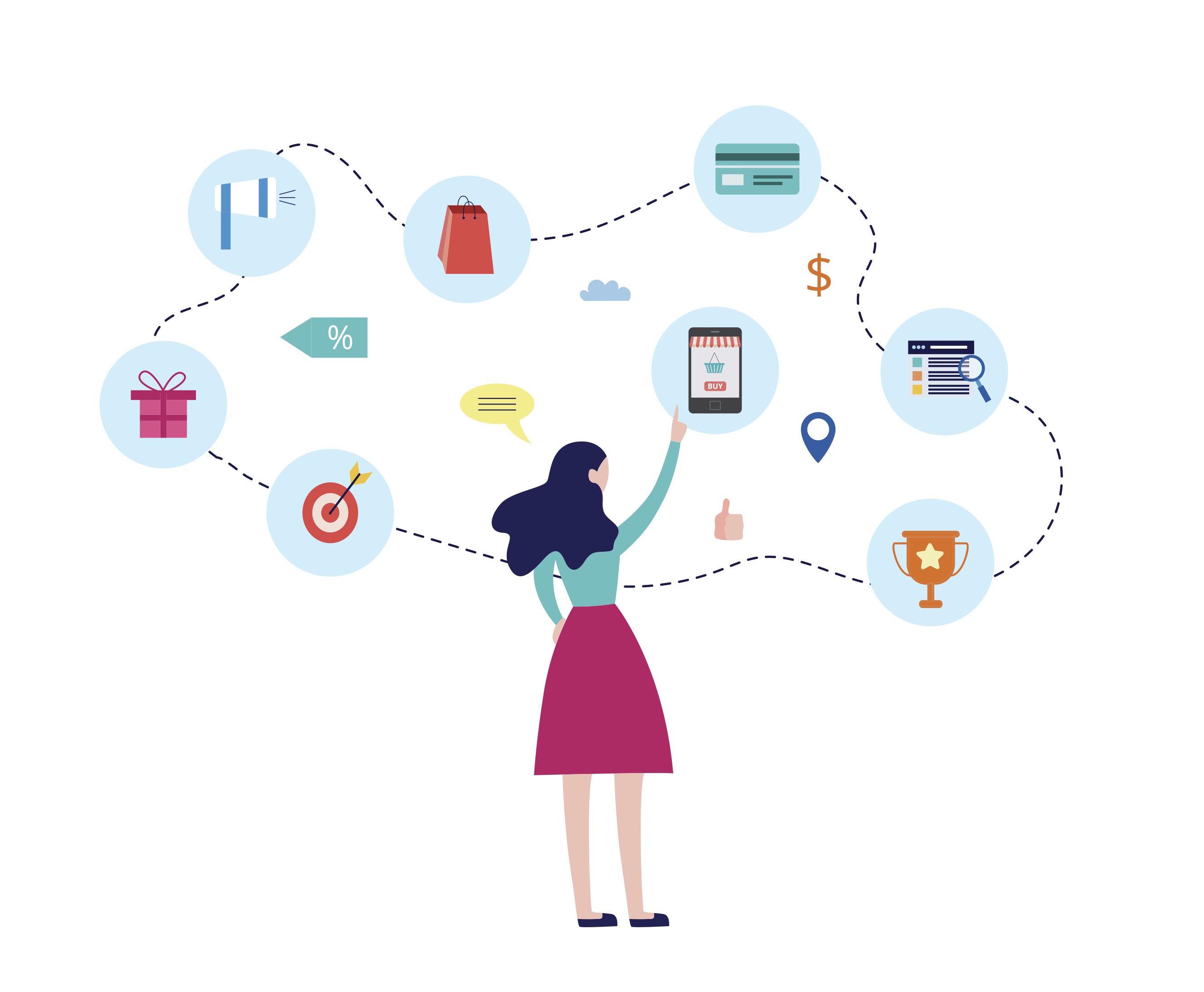
As the variety of touchpoints in the retail world continue to grow in number, the customer journey as well continues to grow into an increasingly omnichannel experience.
Creating truly effective omnichannel customer journeys can be a challenge, but a worthwhile one: research predicts that by 2020, customer experience will outdo both price and product as the main factor in customer decision-making. Tellingly, Dimension Data’s 2017 Global Customer Experience (CX) Benchmarking Report found 71% of organizations cited customer experience as a competitive differentiator, but just 13% of brands self-rated their CX delivery a 9 out of 10 or higher.
Important Customer Journeys
Customer journey mapping can be a really helpful tool for those looking to up their game in the omnichannel sense. Thinking of it as storytelling can be useful. The chapters of your story might include: your client walk-by window shopping; your client searching online for a particular product; their in-store experience; their review process; and even their promotion of your company to other would-be buyers. Evaluate the level of service you provide at each touchpoint: in-store, on your site, the quality of business cards, your email follow-ups, etc., and how your buyer may feel about each. The buyer’s journey can take many directions.
1. The Undecided In-Store Customer
A customer is lured into your store by the punchy window display (well-done). She tries on a blouse but leaves without buying, just as 70% of customers do. To address this gap, an associate follows up via email to thank her for visiting, attaching an easily clickable version of the blouse at the same time. Or—maybe the customer leaves the store with a business card that has the store’s url on it. Either, way, the service and the relationship are extended beyond the store, and the customer is able to conveniently continue her experience, transitioning from brick and mortar to online seamlessly. The customer then purchases directly via your website and leaves a glowing Google review after the fact, citing the helpful but not pushy service she received. It’s very much worth comparing your online conversion rates before and after connecting your associates online to measure your success. Salesfloor‘s embedded online tool (which customers can use to connect with associates based on location) has increased leading retailers’ conversion rate 10x, and contributed to an 18% rise in new customer acquisition. By maintaining a relationship with the undecided customer, associates can hold onto sales even when a customer doesn’t return in person. It also discourages continued research at another store.
2. The anonymous online shopper
A customer hates calling stores and being put on hold. He browses your website and has a question about the “feel” of a product. Pleasantly surprised at the fact that he can easily chat online with an associate, the customer appreciates having the option to schedule a meeting in-store. Being able to ask questions and get answers from a human being versus a bot drives traffic to your store and helps drive online conversions. Let’s face it: in today’s world the average shopper browses online before even thinking about going into a store. There is an opportunity to capture these shoppers directly on your website and start facilitating a relationship between your customers and associates, ultimately drawing them back into your store. Providing next-level online services like these also makes it a lot easier to collect customers’ email addresses and further build your resources.
3. The omnichannel customer
One of your associates has built up a long-term rapport with a customer, and receives a notification that he has not purchased in 30 days. Your associate then consults the customer profile, trending recommendations, and the customer’s online purchase history before checking in with him via email and recommending a product that might complement his last purchase. National retail emails have an average open rate of just 20%, yet email still remains the strongest digital channel when it comes to ROI, generating a solid $38 for every $1 spent. Given that associates’ online sales can represent 10% of all your online business, harnessing email’s potential can go a long way. Providing your associates with automated tasks based on customers’ purchase history along with the accompanying personalized recommendations can go a long way toward creating scalable clienteling strategies that just weren’t possible before.
Understand Your Customers
No matter what your customer’s journey, one thing is for sure: the key to success lies in providing your associates with the tools to be better influencers—each and every step of the way. Part of that is allowing your associates to omnipresent in as many channels as they can access, and another part is providing them with the technology to do so. The other key to truly understanding your customers comes with the data insights that can help you optimize those journeys and deliver exceptional experiences at every touchpoint. Salesfloor can help.



